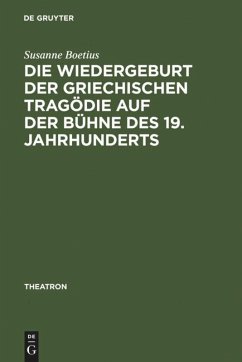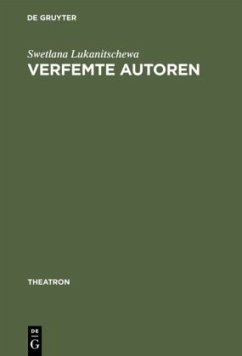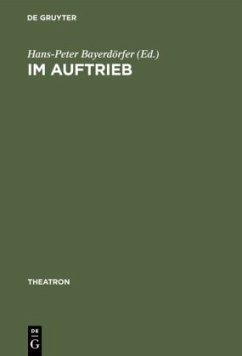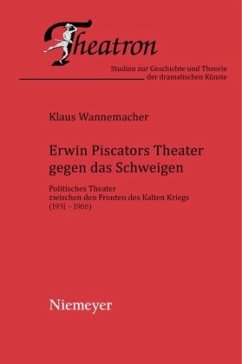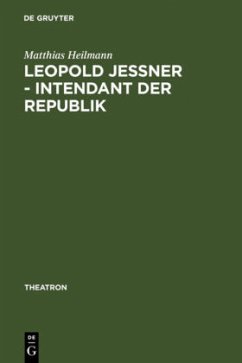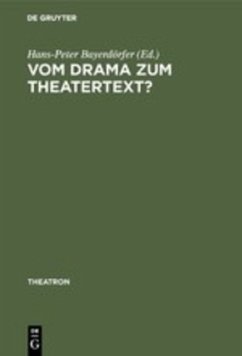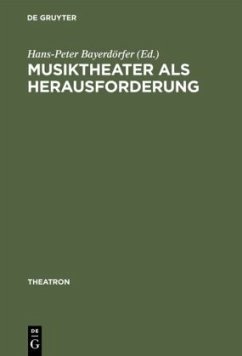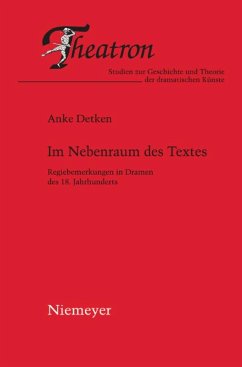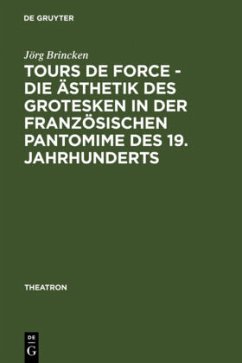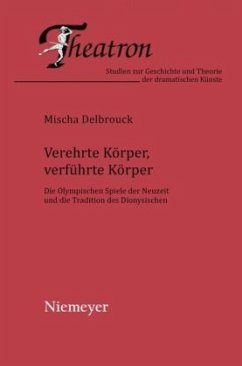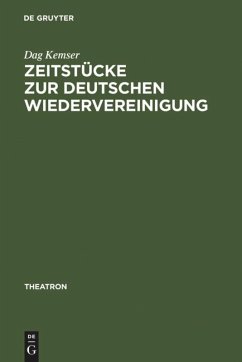
Zeitstücke zur deutschen Wiedervereinigung
Form - Inhalt - Wirkung

PAYBACK Punkte
0 °P sammeln!
The study investigates the response to reunification in the German theatre, concentrating on 1) the prominence of this topic in plays, 2) formal approaches, and 3) the aspects of reunification that are emphasized. After an initial empirical survey, various formal approaches and thematic aspects are discussed in a range of case studies. All in all, it transpires that reunification was considerably more prominent as a dramatic subject than has frequently been conceded. It is perceived almost exclusively as a problematic case, and both dramatic and post-dramatic approaches are employed in equal measure to address the problems involved on the stage.
Die Arbeit untersucht theatrale Reaktionen auf die Wiedervereinigung vor allem unter drei Gesichtspunkten: 1. In welchem Maße war die Wiedervereinigung ein Thema für das Theater? 2. Welche Wege der Auseinandersetzung - vom klassischen Repräsentationsmodell 'Drama' bis zu 'postdramatischen' Ansätzen - sucht das Theater? 3. Welche inhaltlichen Aspekte des gesellschaftlichen Prozesses stehen in den Zeitstücken zur Wiedervereinigung im Vordergrund?
Das Gewicht des Themas im Theater der 90er Jahre wird zunächst anhand einer empirischen Untersuchung ausgelotet. Im Hauptteil werden verschiedene formale Ansätze und inhaltliche Gesichtspunkte in Fallstudien dargestellt, ergänzt durch eine Auswertung der Rezeption. Anschließend wird die konkrete Kommunikationsstruktur in zwei Inszenierungsvergleichen einerseits eines dramatischen, andererseits eines postdramatischen Textes untersucht. Die Wiedervereinigung erweist sich insgesamt als ein Thema, das im Theater wesentlich präsenter war als von der Theaterpublizistik in aller Regel behauptet. Daneben zeigt sich, dass die Wiedervereinigung fast ausschließlich als Problemfall wahrgenommen wird, zu dessen Formulierung dramatische wie postdramatische Ansätze gleichermaßen genutzt werden. Die divergenten Ansätze fassen unterschiedliche Ebenen ins Auge, zielen aber gleichermaßen auf eine inhaltliche Auseinandersetzung mit dem gesellschaftlichen Prozess.
Das Gewicht des Themas im Theater der 90er Jahre wird zunächst anhand einer empirischen Untersuchung ausgelotet. Im Hauptteil werden verschiedene formale Ansätze und inhaltliche Gesichtspunkte in Fallstudien dargestellt, ergänzt durch eine Auswertung der Rezeption. Anschließend wird die konkrete Kommunikationsstruktur in zwei Inszenierungsvergleichen einerseits eines dramatischen, andererseits eines postdramatischen Textes untersucht. Die Wiedervereinigung erweist sich insgesamt als ein Thema, das im Theater wesentlich präsenter war als von der Theaterpublizistik in aller Regel behauptet. Daneben zeigt sich, dass die Wiedervereinigung fast ausschließlich als Problemfall wahrgenommen wird, zu dessen Formulierung dramatische wie postdramatische Ansätze gleichermaßen genutzt werden. Die divergenten Ansätze fassen unterschiedliche Ebenen ins Auge, zielen aber gleichermaßen auf eine inhaltliche Auseinandersetzung mit dem gesellschaftlichen Prozess.





